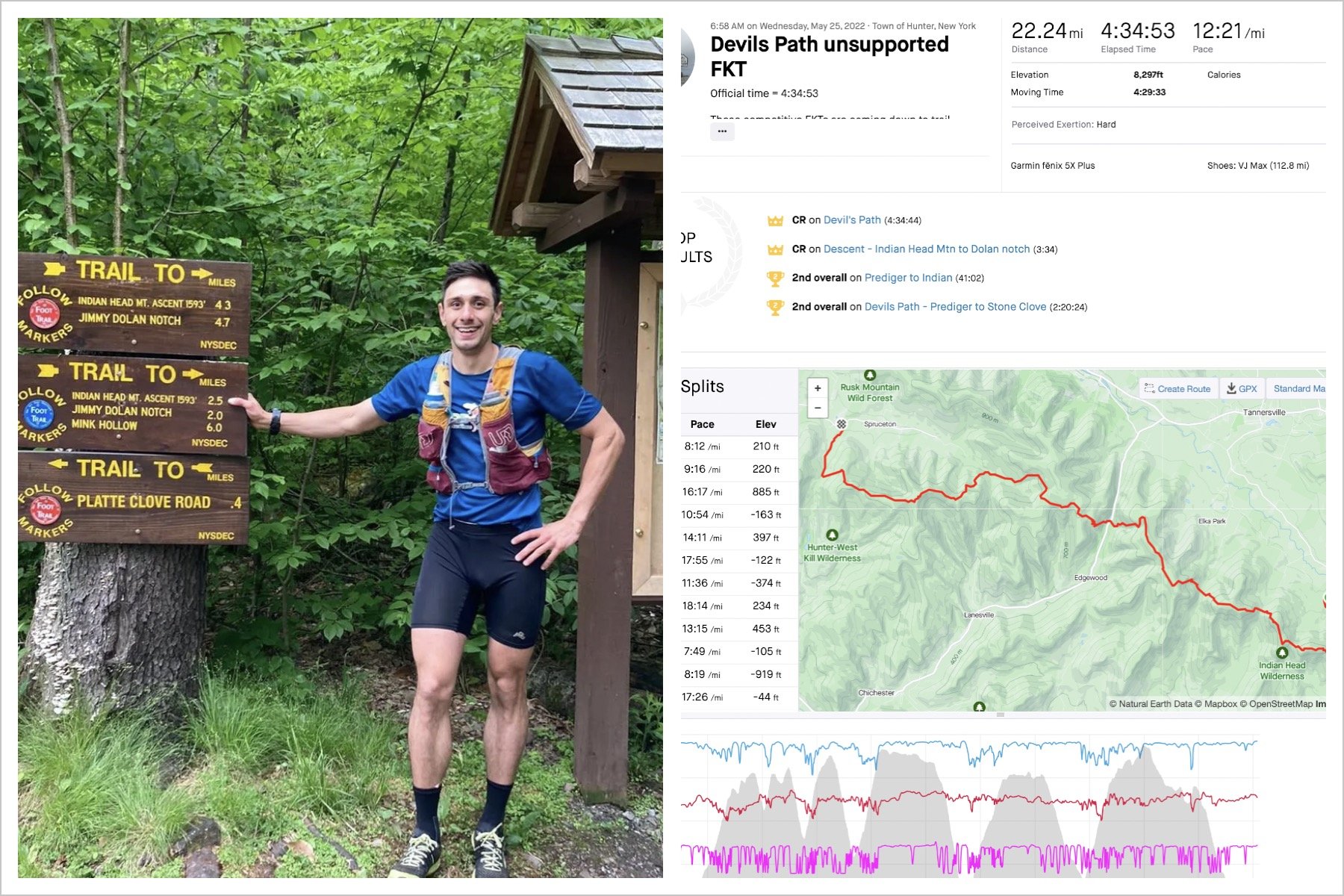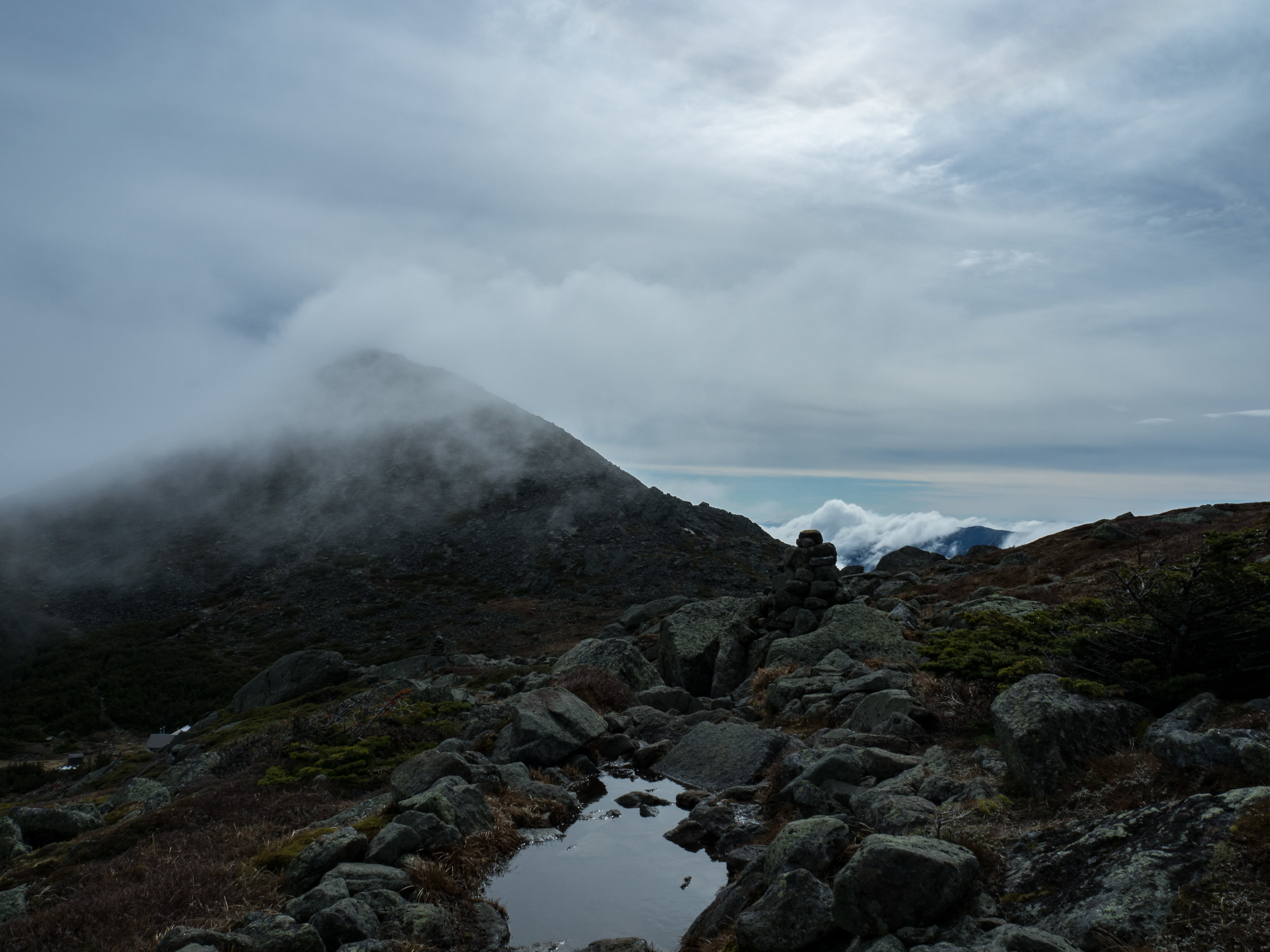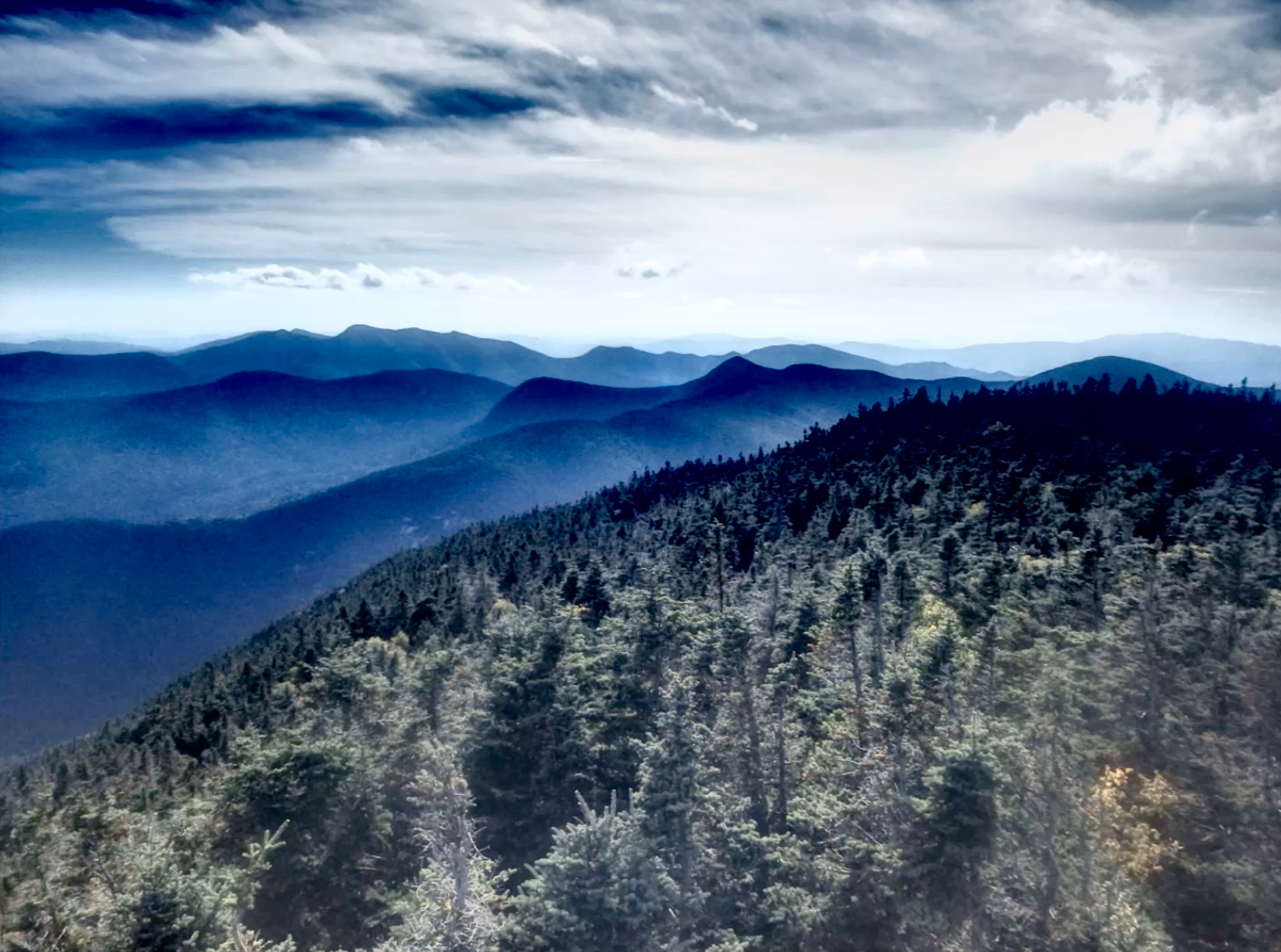Pachaug Trail FKT Report by Ben Nephew “A Tough New England Trail”
The Pachaug Trail is a 24 mile U shaped trail through Eastern Connecticut from Green Fall Pond, to route 138 in the town of Griswold, with a short visit to Rhode Island. Like the Nehantic and Narragansett trails, it is mostly rolling single track interspersed with sections of jeep roads and few road crossings. It is not as well travelled or marked as the other two trails, and although not as hilly as the Narragansett (FKT Report), it has several tight, technical sections where holding a faster pace is challenging; more like impossible. Earlier maps have it listed at 28 miles, but the CT Blue Blazed trails site omits the last 4 miles and lists it as 24.4 miles. www.ctwoodlands.org/BlueTrailsMap
Since I wasn’t in the mood to do a 48 mile solo run, I decided to d a one way run, which is logistically challenging given the east and west trailheads are 7 miles apart. I tried to get Bob Jackman to come along and we could have dropped a car, but I waited too long and he had already made running plans for the weekend. I decided to park at the western end and run on the roads to the eastern start at Green Fall Pond. I ended up dropping my Inov-8 Orocs close to the Pond before starting and running the 5 miles of road in Inov-8 Road Ultras I was testing. Given that the goal was the trail itself, I wanted to take it very easy on the road and use it as a warmup. I was thinking 8:30 pace would be a good idea. I started out at what felt like 8:30 pace, and it ended up being 7:20-30 pace. Oh well, I would get the road section over with faster. I stopped about 5 miles in at the start of the dirt road to Pachaug State park to switch my road ultras to my trusty Oroc 340’s. I wasn’t sure how much ice I would encounter, but I did not want to worry about traction.
I made my way to the start (at the sign that says “end of trail”) and headed up the dirt road to the hard left on the singletrack. The Pachaug doesn’t mess around, those first two miles are technical and it is hard to maintain any sort of decent pace. As you move past the first rocky mile, the trail becomes very narrow as it winds through Rhododendrons and other low shrubs. The problem with this was that they were wet, and it was in the mid 30’s. I would not be having any issues with overheating.
Although there were still about 1000 turns per mile, the miles from 2-6 are runnable, and then you get to the trail around Beach Pond, which winds up and down small hills, boulder fields, and rock ledges. There are a few tricky turns in this section that you really don’t want to miss. Miles 9-15 had more jeep road sections where I made better time, for the most part. At one point you get to some random pond that has dam that probably used to have a bridge across it. There is currently no bridge, so I had to run through a foot of ice cold water for about 30 feet. The jeep roads do not tend to be marked as frequently as the singletrack, so you have to look harder at intersections. After a scenic section through a park on the Wood River you approach Ekonk, where I almost bailed.
As the trail markings become faint, I managed to fall on a large log with broken branches sticking out at all angles. I took one branch hard in the right quad. Of course, right in the middle of the 24 mile trail when I wasn’t really sure where I was. It wasn’t as bad as it had first seemed, and it didn’t really matter in terms of pace, as I came into a section of some of the most intense bushwhacking I have ever done at mile 16. It was bad enough that I thought about turning around if it was going to continue like that. Thankfully, it wasn’t that long of a section and I made it through with my clothes mostly intact. The trail turns onto Cedar Swamp road to a solid climb.
This is followed by a descent into Hell Hollow on winding singletrack. Miles 18-19 are runnable, but lead to a couple of rocky and slick miles along Lowden Brook. It is a great section of trail, just not all that fast considering it is almost flat. The last 5 miles are some of the best on the entire route with plenty of smoother singletrack buried in pine needles. The climbs of Mount Misery are not long enough to be aggravating, even after a few hours on the trail, and the views were welcome after being in the trees all morning. I will say the last couple of miles felt long, and it wasn’t because I was having an energy low. It was probably an issue of being tired from all the little turns, which wear you down. After the challenges of the middle miles, I was happy to see the car at the route 138 parking area. With the road warmup, it had been a long morning for a solo run on a new trail.
For those that may be interested in fueling on long runs, I only took about 600 calories of ice tea in a 32 oz water bottle, and still had some left at the end. I ran the first 2.5 hours, which included the road miles to the start, without taking anything, and started drinking at that point. I am not fat adapted, and eat a pretty average diet that includes plenty of sugar. I think what allows me to work with few calories is that I’ve always done most of my hard 2-3 hour long runs without taking in any calories.
My time was 3:46:18 for 24.2 miles on my Garmin. My watch runs about 0.1 mile short per mile in the woods; the trail is probably closer to 26-27 miles. Like the other Blue Blazed trails, it is a great option for seeing several more remote, surprisingly remote, and scenic sections of New England all in one run. It was also a unique option for clear trail running at a time when both the snowshoeing and hiking conditions were far from ideal. I did run across a few icy sections, so I was glad I had the Orocs, and even without the ice, good traction is appreciated through the many rocky and slick miles on the Pachaug.
Recommended
For more of Ben's race & FKT reports, click here!















